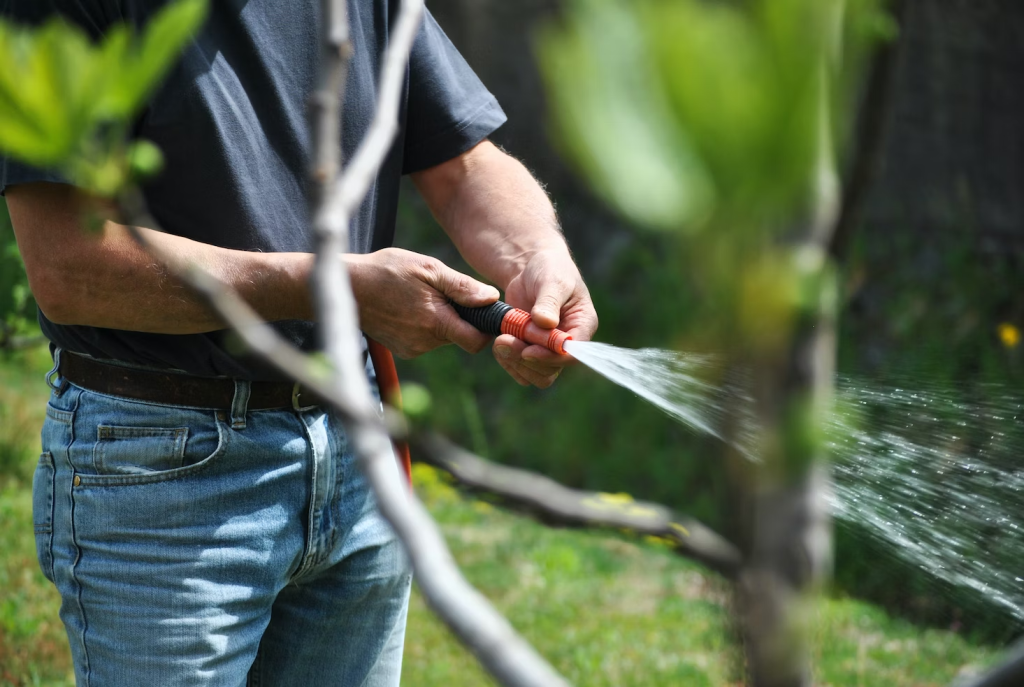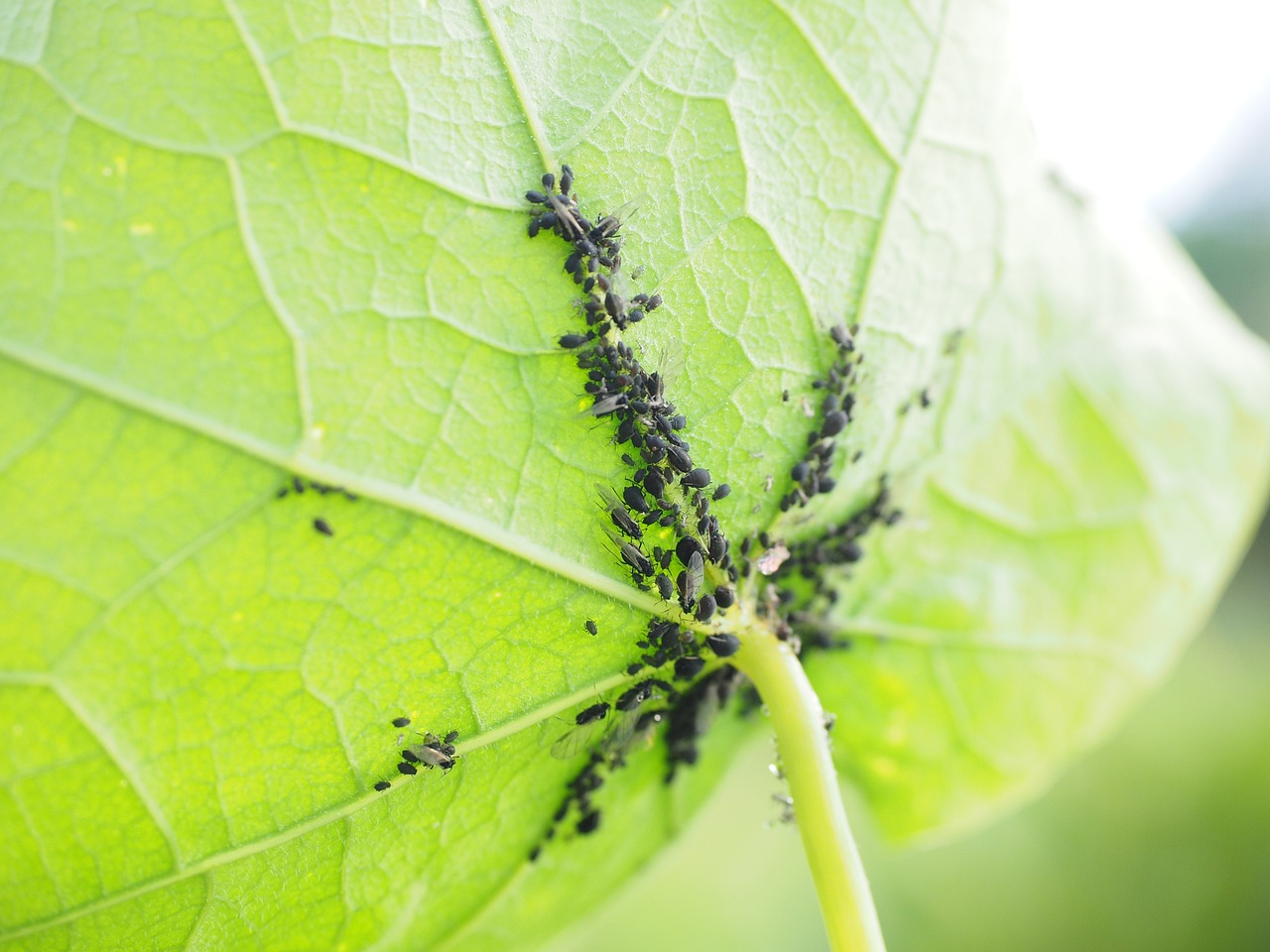Aphids, often referred to as “plant lice,” can be the bane of any gardener’s existence. Almost invisible to the naked eye and surprisingly talented at hiding on the underside of leaves, these pests can wreak havoc on your plants by feeding on the sap.
Sadly, their trouble-making talents don’t end there. Besides causing physical damage to plants through feeding, aphids are notorious for spreading diseases among the flora.
By piercing plant tissue with their needle-like mouthparts, these tiny critters inadvertently pump afflicted plants with viruses capable of causing widespread plant pandemics.
But do not despair — ridding your garden of aphids is possible.
Below, we’ve compiled a list of effective methods to say goodbye to aphids and restore your plants to their full glory.
Understand Your Enemy
Understanding aphids is key to their eradication. Known for their rapid reproduction and adaptability, these sap-sucking insects come in various shapes and colors.
Common types include green peach aphids, cabbage aphids, and oleander aphids, which can be found on a wide variety of plant species.
Here are some of the most commonly found aphid types in North America:
| Type of Aphid | Description |
| Green peach aphid (Myzus persicae) | The most common type of aphid lurking in gardens is the yellowish-green peach aphid. However, do not be misled by its name — while it may have a penchant for peaches, it is not exclusive to these fruit trees. From vegetables to ornamental flowers, this pervasive pest can attack many familiar plant species, extending its insidious reach well beyond its namesake. Regarding vegetable crops, tomatoes and peppers are particularly susceptible to the invasions of these sneaky insects. |
| Potato aphid (Macrosiphum euphorbiae) | The green potato aphid is a prevalent pest, particularly attracted to members of the nightshade family. These destructive insects have an insatiable appetite for eggplants, peppers, tomatoes, and of course, potatoes. Unfortunately for home gardeners and commercial farmers alike, these pests can inflict significant damage on these prized plants by feeding on them and transmitting harmful diseases. |
| Cabbage aphid (Brevicoryne brassicae) | The cabbage aphid displays a distinctive visual feature that sets it apart from other insects. At first glance, its color appears to be gray. Yet, upon closer inspection, one can discern the insect itself is actually green. What is the cause of this discrepancy? A unique waxy coat, often called a “slicker,” wrapped protectively around its body. Its preferred hosts are members of the cabbage family, including mustards and brassicas. |
| Oleander aphid (Aphis nerii) | Due to its vibrant yellow color, the golden oleander aphid is pretty easy to spot. Among various species of aphids, the golden oleander proudly stands out — a true testament to Mother Nature’s artistic flair. Milkweed plants and oleander bushes often harbor these vivid insects, providing an ideal environment for them to thrive. |
How To Identify Aphids
Aphids might be minuscule, but their damage is colossal. Let’s examine the telltale signs of aphid invasion you can use to spot these sneaky bugs before your plants give up the ghost.
- Inspect your plants closely: Grab your trusty magnifying glass and brace for microscopic mayhem. Aphids tend to cluster on the underside of leaves or new shoots, so take your time scanning each one.
- Zoom in on their appearance: Size-wise, aphids range from 1 to 3 mm — so yes, we’re talking TINY. Their bulbous abdomens, spiky antennae, and pear-shaped bodies make them distinctive among garden pests.
- Keep tabs on their life cycle: These critters reproduce faster than rabbits, so nip any infestations in the bud before they explode into tiny-winged terrors. Adult aphids give birth to live nymphs that mature in days and start their very own families.
- Identify their calling card — honeydew: It’s the sweet nectar secreted by aphids as they feast on sap. Look out for a sticky film coating leaves and surfaces near your plants — a surefire clue that these guests have invited themselves to dinner.
- Watch out for secondary symptoms: An aphid-infested plant will often show curled or shriveled leaves, discoloration, and stunted growth. Unusually high attendance of ants is another big red flag, as they tend to these sap-sucking insects for an all-you-can-eat honeydew buffet.
What Does Aphid Damage Look Like?
Aphid damage can take various forms. Here’s how to establish if these notorious pests have made themselves at home.
- Witnessing a colony of aphids in action is a surefire sign that they’re feasting on your plants. Ranging from green to yellow, black, or even pink, these little monsters gather on the undersides of leaves and stems, greedily sucking the life out of them.
- As they feast away, aphids leave behind a trail of chaos. Their insatiable appetite for plant sap causes leaves to turn yellow and curl, leaving a patchwork of wilted foliage in their wake. In severe cases, this relentless attack weakens plants, making them susceptible to diseases and halting their growth altogether.
- To add insult to injury, aphids excrete a sugary substance called honeydew, which cakes onto leaves and branches. This glossy residue attracts ants and paves the way for sooty mold — a black fungus that spreads like wildfire.
- Drawn to the sweet honeydew, ants protect aphids from predators in exchange for this sugary delight. It’s a sinister partnership that spells disaster for your garden’s health.
How To Get Rid of Aphids

With vigilance and proactive measures, you can spot aphid damage early on and nip it in the bud — protecting your precious plants from these formidable foes.
Chemical-Free Approaches
Before diving headfirst into an all-out war against aphids, consider some eco-friendly strategies to help regain control of your garden. These chemically-free approaches benefit your plants and the overall environment.
Start simple: spray your plants with water.
Use a hose with a spray nozzle and a forceful stream of water to knock off aphids and prevent them from returning. Make it a part of your routine; regularly spraying your plants can keep aphid populations in check and prevent future infestations.

Another eco-friendly option is introducing beneficial insects like ladybugs and lacewings into your garden ecosystem. As natural predators of aphids, these helpful creatures work day and night to curb the growth of pesky invaders.
Lastly, don’t underestimate the power of strategic planting. Certain plant varieties can act both as aphid repellents and beacons for their predators.
Consider incorporating marigolds, fennel, and dill into your garden’s design. These plants emit scents that deter aphids, attracting valuable allies like ladybugs and lacewings.
Natural Remedies
Many organic solutions effectively control aphid populations and keep your plants healthy — all without endangering your beloved garden.
One well-tested recipe is a homemade garlic spray. To create this natural aphid remedy, follow these simple steps:
- Blend 10-12 cloves of garlic with one pint of water.
- Strain the mixture, making sure no solid pieces remain.
- Pour it into a spray bottle.
Voilà! You now have your very own natural insecticide to apply to affected areas.
Another eco-friendly option is insecticidal soap, which is specifically designed to combat soft-bodied pests like aphids. Insecticidal soap is safe for most plants and can be purchased at most garden stores or easily mixed at home using mild liquid soap.
To make your own, mix one tablespoon of mild liquid dish soap with one quart of water. Be sure to treat both the upper and lower surfaces of the leaves, as aphids tend to reside underneath the leaves’ protective cover.
Barrier Techniques
Physical barriers are another solution to keep aphids at bay, ensuring your plants stay healthy and pest-free.
Row covers, also known as garden fleece or insect netting, can be draped over your plants to protect them from pests. This lightweight fabric allows sunlight and moisture to pass through while keeping aphids out.
Affordable and easy to install, these barriers are perfect for both small and large-scale gardening projects.
If ants protect your unwelcome leaf invaders, discourage them by applying Tanglefoot or petroleum jelly around the trunks of trees and shrubs. These substances create an impassable barrier for ants, preventing them from accessing the honeydew they crave.
Plant Health Matters

A healthy garden is the ultimate defense against aphids.
Keep your plants resilient by providing adequate sunlight, nutrients, and water.
At the same time, avoid over-fertilizing your plants with excessive nitrogen. While it may seem counterintuitive, too much nitrogen can encourage the growth of soft foliage, which is an aphid favorite.
Keeping your garden clean also minimizes breeding grounds for pest populations. Pruning is a valuable tool for this purpose: be vigilant in identifying and removing diseased or infested branches as soon as you discover them.
Lastly, pay close attention to your plants’ leaves. If you notice signs of active infestation on any leaves, promptly remove and destroy them.
Final Thoughts
Transforming your garden into an unwelcoming environment for aphids may seem challenging. However, implementing a few techniques can help you build a strong defense against these invaders and ensure your garden’s continued growth and vibrancy.
Stay vigilant by keeping an eye out for signs of infestation. Aphids are small, but they can quickly multiply and overrun your greenery within days, leaving unsightly damage in their wake.
Remember to carefully inspect your plants for clusters of aphids, discolored or curled leaves, or sticky residue known as “honeydew.” Catching these troublemakers early on can mean the difference between dealing with a minor inconvenience or an all-out invasion.
With persistence and the proper measures, you can banish those pesky aphids and savor the rewarding beauty of a flourishing garden.
Was it helpful?

Enamored with the world of golf Jack pursued a degree in Golf Course Management at THE Ohio State University. This career path allowed him to work on some of the highest profile golf courses in the country! Due to the pandemic, Jack began Inside The Yard as a side hustle that quickly became his main hustle. Since starting the company, Jack has relocated to a homestead in Central Arkansas where he and his wife raise cattle and two little girls.




